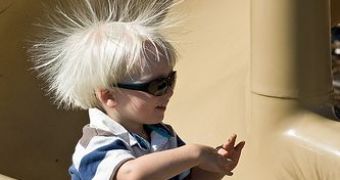The air is loaded with electricity, so if scientists manage to collect it, it should be the newest alternative energy source.
Just like solar cells capture sunlight, a device that captures electricity from the air should be able to transform it so that it can light a house or recharge an electric car, and scientists are currently working on it.
You may think it sounds weird but scientists are already working on a prototype, according to a report presented at the 240th National Meeting of the American Chemical Society (ACS).
The leader of the study, Fernando Galembeck, PhD, from the University of Campinas in Campinas, São Paolo, Brazil, says : “Our research could pave the way for turning electricity from the atmosphere into an alternative energy source for the future.
“Just as solar energy could free some households from paying electric bills, this promising new energy source could have a similar effect,” he added.
Another important thing is that once the way that energy builds up and spreads into the atmosphere is understood, death and all damage produced by lightning strikes can be avoided.
There was a time when scientists believed that water droplets in the atmosphere were electrically neutral and even after they came into contact with the electrical charges on dust particles and droplets of other liquids, they remained so.
After extended research and several experiments, Galembeck and colleagues confirmed that water in the atmosphere really does pick up an electrical charge.
For the study they used small particles of silica and aluminum phosphate, both naturally found in the atmosphere, and they showed that when the humidity was high, silica became negatively charged and phosphate aluminum became more positively charged.
Galembeck explained that “This was clear evidence that water in the atmosphere can accumulate electrical charges and transfer them to other materials it comes into contact with.”
This phenomenon is called 'hygroelectricity,' which means 'humidity electricity', and in the future it might be possible to develop collectors, and just like solar cells, to capture hygroelectricity and route it to houses and businesses.
These panels would be more efficient in areas with high humidity levels, like the northeastern and southeastern United States and the humid tropics.
As said before, this technology might help prevent lightning and it could be placed on top of buildings in regions that have frequent thunderstorms.
The electricity from the air would be drained by the panels and this would prevent the building of electrical charge that is normally released by lightning.
“These are fascinating ideas that new studies by ourselves and by other scientific teams suggest are now possible.
“We certainly have a long way to go, but the benefits in the long range of harnessing hygroelectricity could be substantial.”

 14 DAY TRIAL //
14 DAY TRIAL //